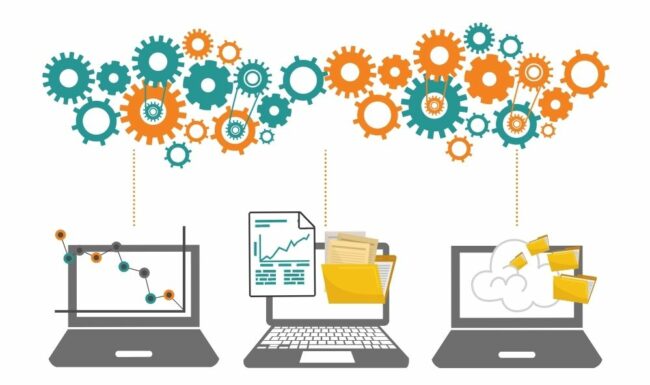How to Overcome Data Silos to Strengthen Customer Experience
You’ve heard this buzzword floating around the office and in meetings. But what are data silos, how do they form, and why are they a big deal for your association and your members/customers?
What Is a Data Silo & How Do Silos Form?
While the word “silo” conjures images of grain storage, silos in the association space are not too far off the mark. Organizational silos have long been a challenge. For example, one department may work in isolation from others, thereby missing opportunities for collaboration and improved member outcomes. Similarly, data silos occur when data is sectioned or compartmentalized in such a way that it is kept separate from other data assets, thus becoming difficult to leverage for decision making. Essentially, each grouping of data is being stored, or “siloed,” separately.
Silos don’t form overnight—in fact, they form gradually over time through natural evolution.
One form of siloing is tangible. The most common silo challenges our clients encounter occur digitally. For instance, the data stored in an association management system (AMS) may not communicate easily with the data stored in annual meeting event management files or Excel spreadsheets containing particular “special” products or service offerings.
Silos also form between upper management and lower-level employees when information deemed “too important” for non-management is not shared. The information shared in the C-suite may not be shared with the middle management team, middle management may not communicate with lower management, and so on.
Why Are Silos Bad for Your Customers?
When information is siloed, it not only translates to a poor outcome for internal association effectiveness but also for your members and customers. To start, when information is segmented, it could mean that employees are pulling double duty. With segmentation, it takes time for the right information to reach the right people—in other words, the data time-to-value ratio is high. When tasks are not communicated clearly and widely, numerous employees may wind up completing the same task, effectively wasting organizational resources. Unfortunately, this is not the only result of siloing … it gets worse from here.
The real challenge is not just inefficiency but, rather, an inability to make timely, data-informed decisions. In our work with association executives seeking to strengthen member experience, the conversation almost always begins with data challenges. Executives tell us it is either too time-consuming to extract data from disparate sources or the necessary expertise simply does not exist in-house to pull data together into a coherent, usable format. Inevitably, “data fatigue” settles in and resources either stop trying to extract and analyze data or view the status quo as acceptable since no feasible alternative is apparent.
The Hurdle: How to Work Through & Beyond Silos
The issue with silos is that every association and department has data segmented and stored in separate groups. Each spreadsheet or system might be useful to the department it serves, but it may not align with the organization’s overall goals.
So, how can your association break down—or at least peer through—silos to enrich customer experience?
It begins with changing your culture. Review your association’s structure and look for ways to increase interdepartmental collaboration and the flow of communication among all levels. In order to deliver an enriching customer experience, the tone at the top needs to set the example. It starts with having a focused (and widely shared) strategy for success that aligns with the wants and needs of your members and customers—the lifeblood of your association. Once a focused strategy is created, everyone in the organization needs to be in on it. This can start with a mission statement and expand into yearly and quarterly goals. Whatever the plan looks like, it must be shared with everyone, and often.
Perhaps the most critical step in avoiding data silos is to identify which systems or processes are contributing to (or creating) your association’s data silos. Audit each team’s and each department’s data management systems as well as their collection and reporting methods. Paint a picture of which systems are in use and who is using them, and then evaluate the richness of data and its ease of entry. Determine the day-to-day struggles (from each employee’s perspective) in terms of data management, and gradually incorporate suggestions for improvement. Eventually, you will be able to devise a better, more efficient solution.
Armed with a more collaborative culture and a clearer picture of your siloed systems and processes, the next step is to start dismantling those silos. Consider the merits of data democratization. More than a trendy buzzword, data democratization is the idea of removing all barriers to data so that everyone (whether that means everyone working at your organization or everyone using a particular system) has access to what they need when they need it. When you share data regularly across groups through some form of dashboard or reporting mechanism, it strengthens your path toward data-driven decision making, which is the antidote to data silos.
Consistency is key—and remember that the journey away from data silos will take time. Data silos accumulate over the lifetime of an organization, so you cannot expect to eliminate or consolidate them in one day. Be prepared to roll up your sleeves as you sift through masses of data, and then map out your options, develop a strategic plan, and keep moving forward.
The Benefits of Breaking Down Silos
By breaking down silos and transforming segmented data into useful, shared resources, your association will not only gain internal efficiencies but also reap external benefits. Internally, an organization-wide strategy boosts employee morale along with culture and performance, leading to stronger, more consistent customer experience. And when you eliminate silos and combine, mine, and extract insights from data, you also put yourself in a position to better segment constituencies, understand member/customer growth patterns, and match offerings to high-potential members and customers—a win-win for customer experience and your association’s overall strategy.












